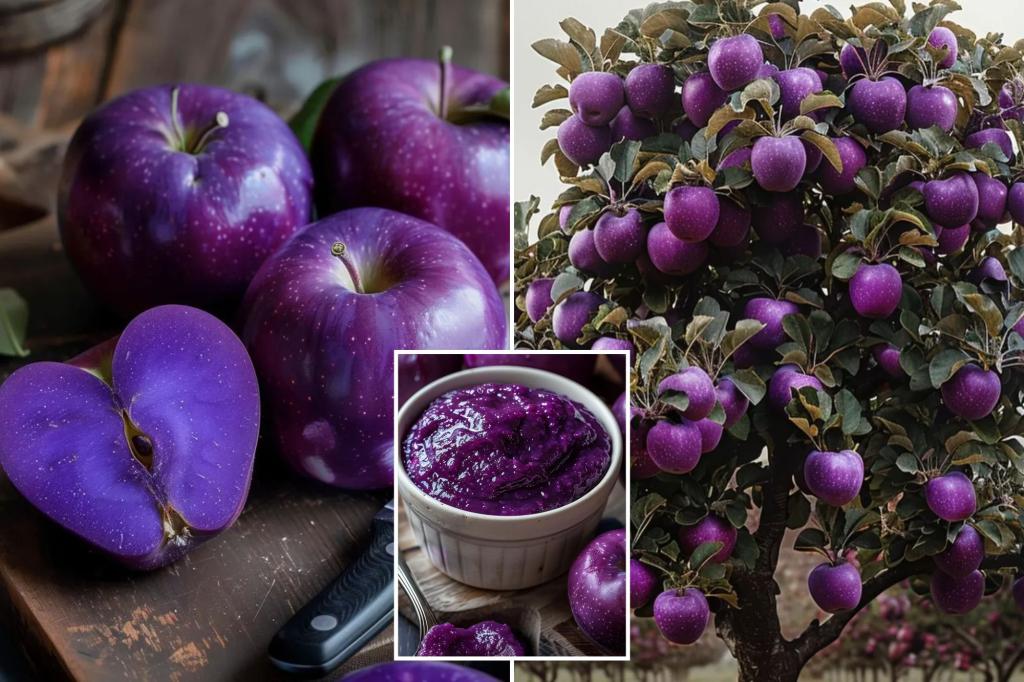Fruit enthusiasts were duped by viral social media posts featuring pictures of purple apples supposedly originating from Saskatchewan, Canada. However, the images were digitally generated and not real. Horticulturist Rachelle Hofmeister confirmed that no purple apples exist in Saskatchewan, with all apples having white flesh and red skin. Despite the fakery, the post gained significant attention on social media, with viewers wondering about the taste of the purple apples and where they could find them.
The original Instagram post, uploaded by user Unnaturalist AI, showed purple apples on a cutting board with one bisected to reveal its violet interior. The post mentioned Knott’s Berry Farm in California but claimed the apples were from Saskatchewan, known for a climate where they thrive and a taste described as cinnamon and banana-flavored. The post also mentioned a fictitious delicacy called “purple applesauce” celebrated by indigenous people in Saskatchewan. Despite the misinformation, the post went viral, leading some people to inquire about the fictional fruit at produce purveyors in Saskatchewan.
Although the digitally created fruit photos may seem harmless, they highlight how misinformation can spread quickly and have real-world consequences when aided by artificial intelligence. An example of this was when an AI-generated photo of a fake explosion at the Pentagon circulated on social media in May 2023, causing confusion among users and a brief stock market selloff in the U.S. These instances illustrate the need for critical thinking and verification of information shared online, especially when it comes to visually convincing content. While some consumers may feel embarrassed for falling for the hoax, recognizing and debunking false information is essential in the digital age.
Hofmeister mentioned that Regina’s garden center often receives inquiries when AI-generated plant images go viral, showing the impact of online fakery on real-world businesses. The allure of purple apples convinced some individuals to make pilgrimages to Saskatchewan in search of the non-existent fruit, highlighting the power of visually compelling content in capturing people’s interest. Despite the disappointment of realizing the purple apples were a fabrication, the incident serves as a reminder of the importance of verifying information before believing and sharing it online.
In conclusion, the incident involving the AI-generated purple apples showcases how misinformation can spread rapidly and capture the imagination of social media users. While the fake photos may seem harmless on the surface, they can have unintended consequences in the real world, as seen in the case of the Pentagon explosion hoax. The story serves as a cautionary tale for consumers to critically evaluate the information they encounter online, especially when it comes to visually persuasive content. Ultimately, it is essential to verify the authenticity of information before accepting it as true, as the digital landscape continues to be populated with both genuine and fabricated content.


